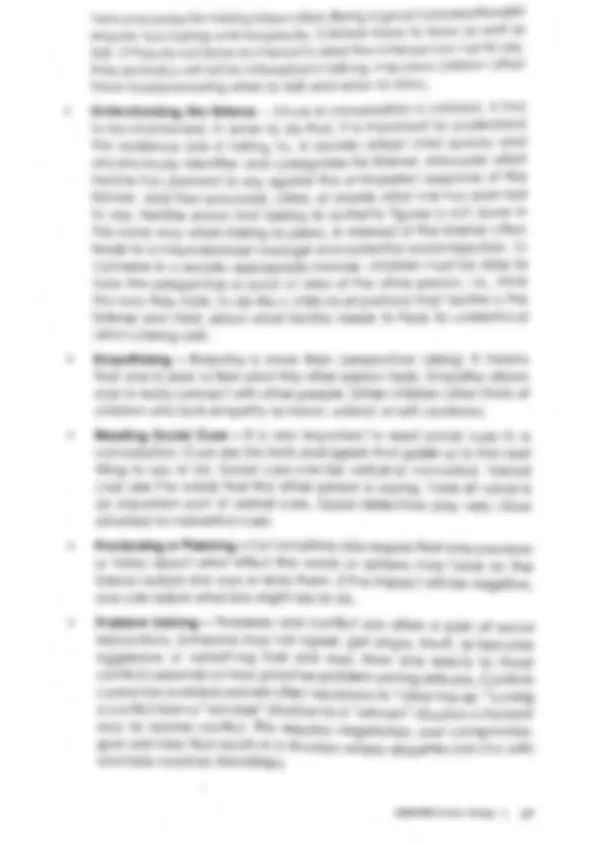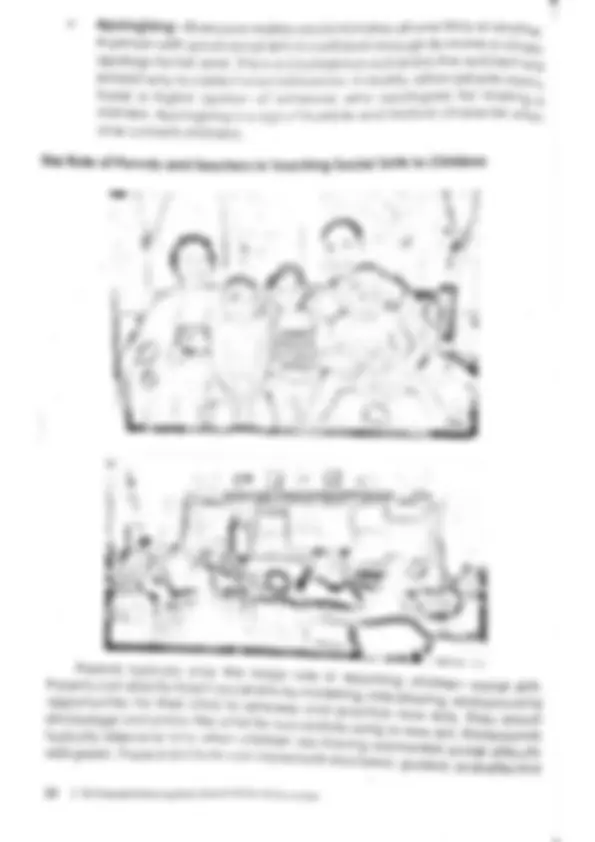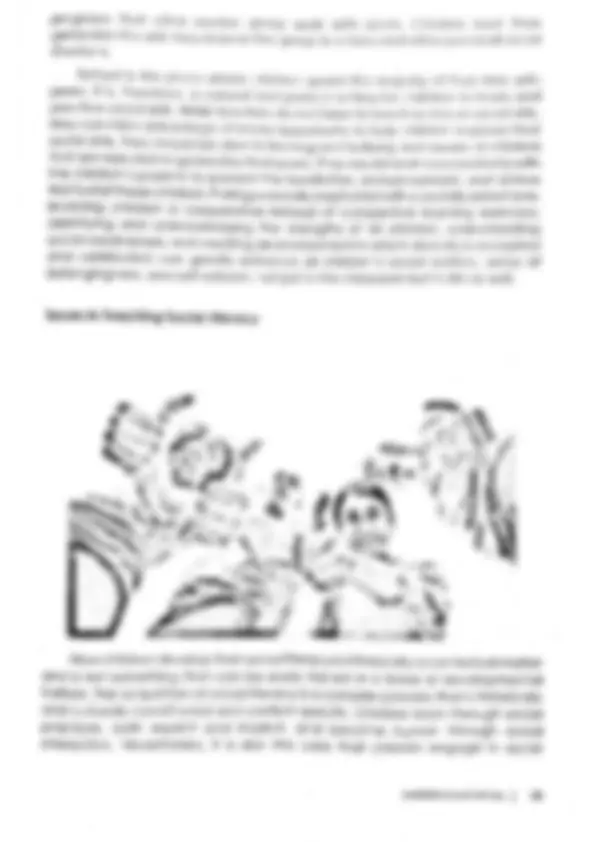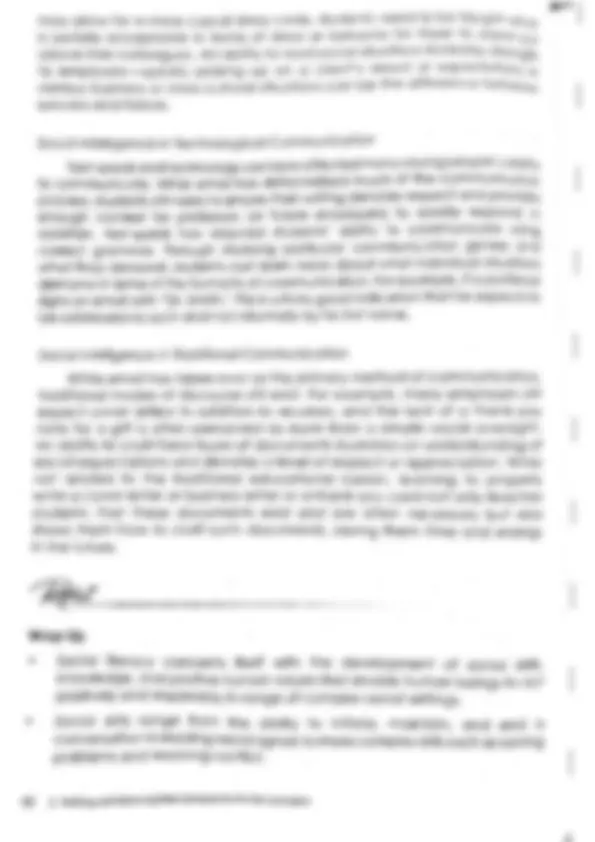






Study with the several resources on Docsity

Earn points by helping other students or get them with a premium plan


Prepare for your exams
Study with the several resources on Docsity

Earn points to download
Earn points by helping other students or get them with a premium plan
Community
Ask the community for help and clear up your study doubts
Discover the best universities in your country according to Docsity users
Free resources
Download our free guides on studying techniques, anxiety management strategies, and thesis advice from Docsity tutors
An in-depth exploration of social literacy, a concept that encompasses the development of social skills, knowledge, and positive human values. It delves into the roles of parents and teachers in teaching social skills to children, discussing various components of social skills and strategies for teaching them. The document also touches upon issues in social literacy and its importance in various social settings.
Typology: Lecture notes
1 / 8

This page cannot be seen from the preview
Don't miss anything!





Social
Literacy
A t t h e e n dof thischapter, you should b e able t o :
explain t h e roles o f parents a n d teachers in t e a c h i n g social skills to
children; a n d
. discuss a n d e x a m i n e issues i nsocial literacy.
Social literacy
concerns itself with t h e d e v e l o p m e n t o f
social skills,
k n o w l e d g e a n d positive h u m a n v a l u e s t h a t
e n a b l e h u m a n b e i n g s t o a c t
TT
—y
o f1ow to behave a n d freat other people
in a way t h a t is
morally upright
a equiable.
with a view o f promoting
positive a n d productive
relations
are free from unfair prejudices, hate,
a n d discrimination.
These thre
descriptions
will b e e x p l a i n e d below.
Bymorally
upright, we refer to
thoughts, speech, action
ivati
that a d h e r e t o
a standard o f
right a n dwong,
O n the other hana la
fo Speech, a c t i o n s , a n d
behaviors t h a t are in-line with a fixed standard of
Justice—a system t h a t
promotes a n d rewards g o o d a n d a t t h e s a m e time
punishes wrongdoing.
A n y system o f justice, whether
national, regional, orlocal
requires a body o f rules o r laws by
which to measure a n d
administer rewards
a n d p u n i s h m e n t. E q u i t a b l e are t h e s p e e c h , actions, behaviors, a n d
decisions
c o n f u s e d with equality, which c o n n o t e sa fixed standard o f treatment for
all
p e o p l e , equity seeks t h e good o fothers, a n d labors to find means by which
everyone g e t s “ w h a t t h e y need" rather t h a n simply “everyone gets the same
thing in the same amount.”
:
Peers a n d schools playa formative role o n thesocial skillsdevelopment of
children. These social skillsare oftenexpressed asconsisting ofthree inter-related
components: social perception, social cognition a n d social performance
(Arthur, Davison, &Stow,2000). Increasing emphasis has been placed o nthe last
c o m p o n e n t , particularly
in terms ofoutcomes. Social skill isdefined in literature
a s ‘ t h eability
to interact with others in a given social contextin specific ways that
are socially
a c c e p t a b l e o r valued a n d a t the sametime personally beneficial,
mutually beneficial, o r
primarily beneficial toothers.’
There are several types o f
social skillsthat
must b e mastered for
a child
to be socially
a d e p t. These range
from the
ability to
initiate, maintain,
a n d
e n d a
conversation
to reading
social signals
to more complex
skills such as
represent s o m e o f t h e
fundamental
principles
o f relating
well to
others. Children
with social skill
deficits
c a n b e t a u g h t these skills directly by
parents,
teachers,
and/or
professionals
using t h e strategies o f
modeling,
role-playing,
rehearsal,
a n d
practice.
Greeting
— Children
develop
relationships
with peers
by interacting
with them.
The
first step
in a social
interaction
is greeting
someone.
a n o d
or a
wave.
The n o n v e r b a l
part
o f greeting someone is just as
important
as the
words. It is not so
much
what
one says
but how he/
she
says it that lets
people
know he/she is
glad
to see
them.
Conversation-in
ordertocamryona
conversation,
a child
must
itiate,
maintain
a n d close
conversation
appropriately.
This
Initiating
b e a b l e
t o n
.
iy Enhancing
New
Literacies
Across the Curriculum
|
3 6
|
Building?
n
d listening
and attention
skills,
as well
as
the ability
to take
Apologizing
A person with good socialskillsisconfident enough to makeasincera
easiest way t o correct asocialblunder. Inreality, o t h e r p e o p l e Usually
h a v e a higher opinion o f someone who apologizes for making q
m i s t a k e ,Apologizing isa sign e fhumble a n d m a t u r e c h a r a c t e r when
o n e commits
mistakes.
Parents
typically p l a y t h e major role i n t e a c h i n
i
.
Parentscan directly teach social skillsb 9 children social skill
38 | Building andEnhancingNew Literacies Across the Curriculum
programs that often involve group work with peers. Children must then
generalize t h e skills t h e y learn i n t h e g r o u p to s c h o o l a n d other
personal social
situations.
School is the p l a c e where children spend the majority of
their time with
peers. It is, therefore, a natural a n d perfect selting for
children t o learn o n d
practice s o c i a l skills. While t e a c h e r s d o n o t h a v e to t e a c h
a class i n social skills,
they c a n t a k e a d v a n t a g e o f e v e r y o p p o r t u n i t y t o h e l p c h i l d r e n i m p r o v e
their
social skills. They s h o u l d b e alert t o teasing a n d bullying a n d a w a r e o f c h i l d r e n
that are rejected or ignored by
their peers. They should work cooperatively with
t h echildren's p a r e n t s to prevent t h e
humiliation, embarrassment, a n d
distress
thatbefall t h e s echildren. Pairing a socially i n e p t c h i l d with
asocially a d e p t one,
involving children in cooperative instead of
competitive learning exercises,
identifying a n d a c k n o w l e d g i n g
t h e strengths o f all children, understanding
social weaknesses, a n d c r e a t i n g a n
environment in w h i c h diversity is a c c e p t e d
belongingness, a n dself-esteem, n o t just in theclassroom b u t inlife aswell.
| Issues in Teaching Social Literacy
a n d is n o t something t h a t c a n b e easily traced in a linear or developmental
fashion. Theacquisition o f socialliteracy isac o m p l e xprocess t h a t is historically
a n dculturally conditioned a n dcontext-specific. Children learnthrough social
practices, b o t h explicit a n d implicit, a n d become h u m a n through social
interaction. Nevertheless, it is also the case that
children engage in social
CHAPTER 3 SocialLiteracy |] 39
oe
Mn
Ne
IARTED wi Ten
own
behavior
is questioned. We
demand
justice when we perceive ourselves
to b e victims of
wrongdoing.
but we
surround
ourselves with excuses when
treating others with
equity costs more t h a n we e x p e c t e d.
Today's students h a v e grown u p with t h e Internet t h a t they h a v e b e c o m e
inseparable
from their gadgets. Blake (2017)
offers helpfulreminders t o y o u n g
professionals
in terms o f
social skills in
t h e m o d e r nage.
This situation underscores
theimportance
of educating studentsin w h a t c o u l d b e called
social literacy
toensure
their a c a d e m i c a n d career
success.
Situational
Awareness
in the Workplace
While casual office
attire has become the norm in many offices, job
in casual clothing, texting, or using phones during job interviews or even
bringing their parents with them. Such behavior demonstrates
a lack of
situational awareness about what is appropriate to d o
in
different social
circumstances. While college classrooms or the
actual
office atmosphere
CHAPTER 3 Social Literacy | 41
may allow for amorecasual
dresscode, students need to b e taught
wh,
‘above their
colleagues. A nability t o r e a d
social situations illustrates strength
t o employers—quickly p i c k i n g u p o n a client's m o o d o r expectations jp,
s u c c e s s a n d f a i l u r e.
Text-speak a n d technology use
have affected many young people's ability
to c o m m u n i c a t e.
While
email has deformalized m u c h of t h e
communication
process, students
still n e e d toensure
their writing
d e n o t e s respect a n d
provides
e n o u g h context for professors (or future
employers)
to readily
respond. In
addition,
text-speak
h a s reduced s t u d e n t s ’
ability to
communicate using
correct grammar.
Through studying
particular c o m m u n i c a t i o n
genres
and °
what they
demand, students c a n learn more
about w h a t
individual situations
d e m a n d in
terms o f t h eformality
o fcommunication. For
example, if aprofessor
be addressed as such a n d not
informally
by his firstname.
Social Intelligence in Traditional
Communication
Whileemail has t a k e nover as t h eprimary
m e t h o d o f communication,
traditional m o d e s o f discourse still exist. Forexample,
m a n y employers still
e x p e c t cover letters i n a d d i t i o n t o resumes, a n d
t h e l a c k o f a thank-you
n o t e fora gift is o f t e n p e r c e i v e d as m o r e t h a n a simple s o c i a loversight.
s o c i a l e x p e c t a t i o n s a n d d e n o t e sa l e v e l o f r e s p e c t o r a p p r e c i a t i o n. While
n o t r e l a t e d to t h e traditional e d u c a t i o n a l c a n o n , l e a r n i n g t o properly
students t h a t these documents exist a n d are o f t e n n e c e s s a r y b u t also
showsthem how to craft such documents, saving them time a n d energy
in t h e future.. o o
Wrap Up
» Social literacy concerns itself with the development o f social skis.
knowledge, a n d positive human values that enable human
beings to act
e Social skills range from the ability to initiate, maintain, a n d end @
conversation to reading social signals to more complex skills s u c h a s solving
problems and resolving conflict.
42
| Building andEnhancingNew
Litéracies Across the
Curriculum